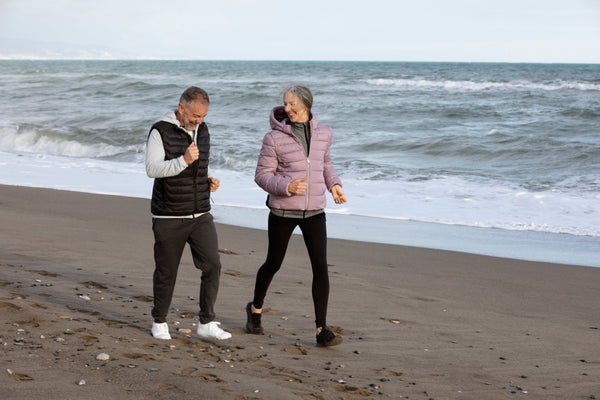Why You May Be Short on the ‘Sunshine Vitamin’ and How To Fix It

Vitamin D and calcium are the two most important nutrients for healthy bones. Fortunately, our bodies can make Vitamin D from sunlight and from certain foods such as fatty fish and dairy. Then, we can use the vitamin to absorb calcium, a mineral that hardens and strengthens our bones and teeth.
Yet, one of every four adults in America has a Vitamin D deficiency. And when you have low Vitamin D you risk losing bone density, which could lead to fractures and breaks, muscle weakness, joint pain, increased risk of falling and, over time, osteoporosis.
Why You Might Not Be Getting Enough Vitamin D
How can so many of us be short on the so-called “Sunshine Vitamin?” Here are a few reasons you might not be getting enough Vitamin D:
1. You Don’t Get Enough Sun. This may be especially true in the winter months in the Northern Hemisphere and for people who live in cloudy climates or who work inside an office and spend most of the day indoors.
2. You Practice Safe Sun Exposure. Ironically, the sunlight that enables our bodies to make Vitamin D also poses risks for premature skin aging and cancer. While it makes sense to protect yourself by wearing sunscreen and a wide-brimmed hat, that also can leave you short on Vitamin D.

3. You Have Certain Genetic or Health Factors. People with darker skin are not able to make as much Vitamin D from sunlight. Because of that, about two-thirds of Hispanics and eight out of 10 African-Americans have a Vitamin D deficiency. Many people also have health conditions that limit their ability to make Vitamin D.
4. You’re Over Age 65. Older people can’t make Vitamin D from sunlight as well as younger adults and children.
5. You Don’t Eat Fish or Dairy. Some of the best food sources of Vitamin D are fatty fish such as salmon, mackerel and tuna. Cheese and milk fortified with Vitamin D are other leading options.
How To Boost Your Levels of Vitamin D
When we don’t make enough Vitamin D from sunlight or from the food we eat, there is another option to fill the gap: Taking a dietary supplement of Vitamin D3, which is the same form of Vitamin D we make from the sun.
For example, Happy Sunshine from Basic Brands provides 1,000 International Units (IUs) of Vitamin D3 in each daily soft gel. Plus, the soft gels meet any diet restrictions you may have because they’re non-GMO and gluten-free with no egg, fish, shellfish, lactose, milk, peanut or tree nut ingredients.
While 1,000 IUs of Vitamin D3 are enough to supply the daily needs for many people, your doctor may recommend a higher amount if you already have a Vitamin D deficiency. Omax® High Potency Vitamin D3 provides 5,000 IUs in one daily tablet.

Vitamin D is key to reducing bone fractures and the risk of falls as we age. And research has shown that Vitamin D supplements are the best way to ensure proper levels of Vitamin D, especially among older adults.
Getting enough Vitamin D3 not only helps the body absorb calcium and regulate bone growth, but that calcium also promotes strong muscles and a healthy immune system. In fact, studies by the National Institutes of Health have found that a daily supplement of 5,000 IUs of Vitamin D3 reduces the risk of acute respiratory infections and shortens the recovery time for people with COVID-19.
Plus, the Vitamin D3 supplements from Omax® and Basic Brands are rich in protein, amino acids, fiber and essential Omega-3 fatty acids that support a wealth of other health benefits for daily living.
5 Warning Signs You May Need More Vitamin D
←Back to Main Blog





